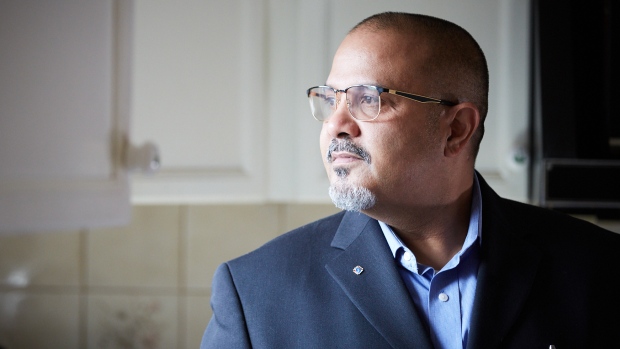Nov 5, 2019
Here’s what you need to know about life insurance
Here’s what you need to know about life insurance
It can be a confusing product, especially when it comes to figuring out how much you need and what type to purchase. Here are a few things to consider before buying.
At Rick Kahn’s chicken franchise in Pickering, Ontario, the young staff get more than an entry into the restaurant business, they also receive some financial mentoring from their boss, who’s a big believer in saving for the future and protecting what you have with insurance.
The 50-year-old entrepreneur often tells them about how insurance can help them protect their families, when they eventually have one, and he’s open about his own insurance-related purchases. He and his wife bought whole life insurance on themselves and their three young daughters, who are now covered for life.
“As our kids become adults, insurance will get more expensive,” he says. “My wife and I want to get rid of some of their overhead [costs] now. We want them to be able to stand on their own.”
As his staff are learning, life insurance is a different kind of financial purchase, since you’re paying for something you may not need to call on for decades. But that’s something Canadians as a whole are happy to do. They are a well-covered group, with 60 per cent of the population owning about $4.7 trillion in life insurance coverage, according to the Canadian Life and Health Insurance Association.
RELATED LINKS:
Learn more about Canada Life term insurance
Coverage when it counts: Critical illness insurance from Canada Life
However, how much to buy or what kinds of products to own still confuses many Canadians, says Moshe Milevsky, a professor of finance at York University who specializes in insurance, pensions and wealth management.
“There are a lot of youngsters that don’t have enough life insurance, and there are older people that have too much,” he explains.

Why life insurance?
Essentially, insurance is meant to protect what people build in the future, such as a family, a home or an annual income, he says. If someone unexpectedly passes away, their spouse can receive a lump-sum payment that they can then use to pay off a mortgage, to save for their children’s futures or to help pay for day-to-day expenses.
Milevsky encourages people – including his students – to buy a small amount of life insurance, because the premiums generally cost less for them when they are young and healthy. For someone in their 20s, who presents minimum risk to the insurer, the annual cost of the premium could be close to their monthly coffee budget, he says.
For seniors, the calculus is different. Dependents have left home, mortgages are mostly paid, health issues are more prevalent, and the cost of an insurance policy is significantly greater. Still, life insurance can make sense for this cohort, too. Some products come with an investment component and offer tax advantages that could be useful for older buyers.
Whatever your age, the first step in the buying process is to determine what you are trying to protect. You might have young children, for instance, a mortgage your spouse can’t afford on their own, or other debts that you would not want to leave behind. For Kahn, part of the rationale for all the insurance he and his wife own is to leave their children an inheritance.
How much should you buy?
If you’ve decided you need insurance, the next step is to determine what kind and how much. Many people cringe at this part of the process, because they feel as if they’re “tempting fate” by putting a dollar value on their lives.
For this to work, though, you need to remove the emotion and make a straightforward calculation of how much income you will earn over your working life. Most people’s lifetime labour value, after taxes, is a few million dollars, says Milevsky.
Some people choose their coverage amount based on their estimated expenses, but Milevsky advises against this method because we generally understate the total. The decision, he says, should be “all about lost income potential and economic loss.”
What type of insurance should you get?
There are a few types of life insurance, but most younger Canadians take out term life, which provides a set amount of coverage for a specific amount of time – 10, 20 or 30 years and can even go up to age 65.
Most people purchase term life in their 20 and 30s and even in their 40s when, statistically, one’s health doesn’t change much. It’s usually affordable, though lifestyle and family history factors could increase the premium price. Some people may also want to consider more permanent insurance, such as whole life and universal life, says John McLaren, a partner with a Toronto-based insurance consultancy and distributor.
The advantage of whole and universal life is that they never expire as long premiums are paid, and both can offer additional coverages and an investment component that allows for withdrawals later in life. With whole life, your premiums are put into professionally managed investments and you can potentially earn dividends over the long-term. Universal life insurance is more flexible – you can raise or lower your monthly payments, you choose the linked investment options and more.
One attractive feature of permanent insurance is that money inside of these policies is tax advantaged within legislated limits. If don’t use the money, it can get passed down to your beneficiaries tax-free; if you withdraw before you pass away, you’ll have to pay tax based on your marginal tax rate.
The costs will vary between term, whole and universal, so make sure to get an expert opinion before choosing what’s best.
Kahn and his wife picked a hybrid type of whole life that allows them to make additional deposits over time, because they plan on withdrawing proceeds from their policies to help pay for their childrens’ education, weddings or even down payments for their homes. They pay between $1,200 and $1,500 a year for each of the children’s policies, and expect to be able to withdraw $38,000 from each account in 20 years.
As for Kahn’s employees, he hopes that by teaching them about insurance – he’s persuaded some of his young staff to meet with his insurance agent and start financial planning – they won’t be as confused as their peers will likely be when it comes time to protect their families. “With finance, and especially insurance, people need guidance,” he says.
The opinions presented are not necessarily those of The Canada Life Assurance Company and are provided for informational purposes only, your circumstances may be different.
To learn more about this product and if it’s right for you, contact a licensed insurance advisor.
